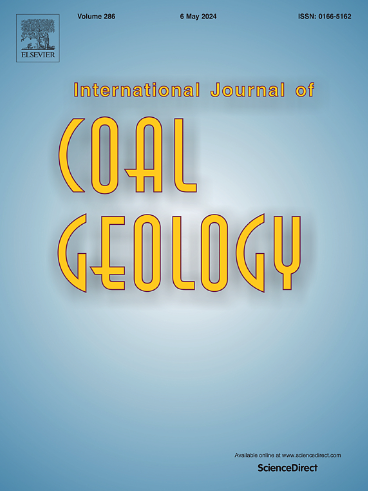Unraveling hiatuses in black shales: Mechanisms and implications from the Lower Silurian Longmaxi Formation, South China
IF 5.7
2区 工程技术
Q2 ENERGY & FUELS
引用次数: 0
Abstract
Fine-grained successions, traditionally interpreted as continuous archives, contain cryptic hiatuses that are critical for evaluating stratigraphic completeness and paleoenvironmental evolution but remain difficult to resolve, especially in deep-water black shales. This study identifies six hiatuses (H1–H6) in the Lower Silurian Longmaxi Formation through integrated sedimentology, cyclostratigraphy, geochemistry, and Evolutive Spectral Analysis (ESA). A 405 kyr eccentricity-tuned astronomical timescale combined with sedimentary noise modeling yields a third-order relative sea-level (RSL) curve, demonstrating controls from both glacio-eustasy and the Kwangsian Orogeny. Our results demonstrate that hiatuses H1–H4 and H6 align with RSL falls, as evidenced by erosion, oxidation, and enhanced bottom-current/gravity-flow activity under cooler climates. Conversely, H5 formed during a warmer highstand, characterized by intense bioturbation and sediment starvation, indicating a non-depositional hiatus. We propose a classification scheme linking ESA spectral features (spectral bifurcation/shifts) with sedimentary attributes, defining seven hiatus types. The Results highlight sea-level fall-driven bottom-current and gravity-flow erosion as the primary hiatus-forming mechanism in deep-water settings. Third-order RSL fluctuations generate major erosional and non-depositional hiatuses (million-year scale), whereas higher-frequency fluctuations induce more subtle and cryptic hiatuses. These surfaces serve as key sequence boundaries, refining sequence stratigraphic frameworks in fine-grained systems. The integrated approach provides a robust methodology for recognizing hiatuses and advances understanding of sedimentary dynamics in deep-water successions.
华南下志留统龙马溪组黑色页岩的断裂机制及启示
细粒层序,传统上被解释为连续的档案,包含对评价地层完整性和古环境演化至关重要的隐裂,但仍然难以解决,特别是在深水黑色页岩中。综合沉积学、旋回地层学、地球化学、演化谱分析等方法,确定了下志留统龙马溪组6个断裂(H1-H6)。一个405kyr偏心率调整的天文时间标度结合沉积噪声建模得到了一个三阶相对海平面(RSL)曲线,显示了冰川-eustasy和光西安造山运动的控制作用。我们的研究结果表明,在较冷的气候条件下,侵蚀、氧化和增强的底流/重力流活动表明,H1-H4和H6断裂与RSL下降一致。相反,H5形成于温暖的高水位,具有强烈的生物扰动和沉积物饥饿特征,表明非沉积间隙。我们提出了一种将ESA光谱特征(光谱分岔/移移)与沉积属性联系起来的分类方案,定义了7种裂谷类型。研究结果表明,海平面下降驱动的底流和重力流侵蚀是深水环境下裂缝形成的主要机制。三阶RSL波动产生主要的侵蚀和非沉积中断(百万年尺度),而高频波动则引起更微妙和隐蔽的中断。这些表面是关键的层序边界,在细粒体系中细化层序地层格架。综合方法为识别裂缝提供了一种强有力的方法,并促进了对深水层序沉积动力学的理解。
本文章由计算机程序翻译,如有差异,请以英文原文为准。
求助全文
约1分钟内获得全文
求助全文
来源期刊

International Journal of Coal Geology
工程技术-地球科学综合
CiteScore
11.00
自引率
14.30%
发文量
145
审稿时长
38 days
期刊介绍:
The International Journal of Coal Geology deals with fundamental and applied aspects of the geology and petrology of coal, oil/gas source rocks and shale gas resources. The journal aims to advance the exploration, exploitation and utilization of these resources, and to stimulate environmental awareness as well as advancement of engineering for effective resource management.
 求助内容:
求助内容: 应助结果提醒方式:
应助结果提醒方式:


